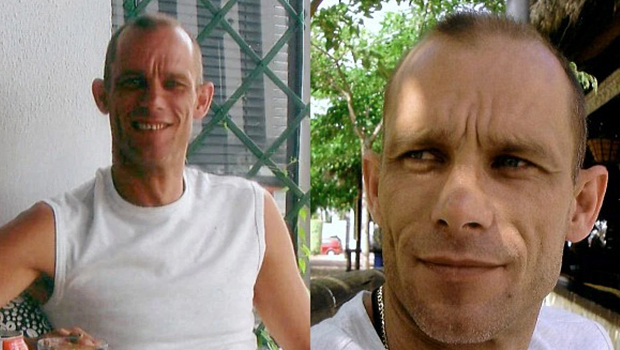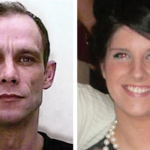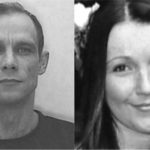Christopher Halliwell: The Secret Murders 2
5.2: Is Halliwell the “East Lancs Ripper”?
by Chris Clark & Tim Hicks
~~~~~
Introduction
The North Yorks Enquirer (NYE) has been running a series of articles on convicted serial killer Christopher Halliwell, to assess the wider range of crimes he may have committed in North Yorkshire and beyond.
Serial killers prefer to operate in areas they are familiar with and know their way around. It follows from this that to assess other crimes committed by Halliwell, it is necessary to identify where he lived and was familiar with. Then compare his modus operandi to unsolved crimes committed in those areas.
Halliwell lived in Dalbeattie, Scotland, several addresses in Swindon, the Liverpool area and Northampton. He may also have stayed with his father in Huddersfield and York areas, giving him a good knowledge of many northern cities and the areas around them.
Halliwell worked in dozens of jobs, including window cleaner, builder, ground worker, chauffeur, taxi-driver and bin man. His hobbies were narrow-boating and fishing. He travelled widely by car and narrow-boat. Consequently, his geographic knowledge and area of operations was enormous.
The authors have analysed Halliwell’s modus operandi, based on the circumstances of Halliwell’s two known murders (Miss Becky Godden-Edwards (Case 24) and Miss Sian O’Callaghan (Case 28) and his deposition sites at Ramsbury, Wilts. This has been compared to unsolved and undetected crimes in areas he was familiar with. This analysis is summarised below, in tabular format:
All of the cases in this article comply with Halliwell’s modus operandi and victim selection criteria.
Adding to the complexity of this investigation, Halliwell was forensically aware. He changed cars regularly and destroyed forensic evidence whenever possible. The authors believe that whenever possible he deliberately varied his modus operandi, and abducted victims in one force area, then deposited them in another. Thereby complicating the police investigation and making it more difficult for police intelligence analysts to link his crimes.
Because of the size of this investigation, the NYE is covering it in a series of articles:
The NYE Christopher Halliwell Series:
- The breaking of Detective Superintendent Stephen Fulcher. By Tim Hicks
- Book review: “Catching a serial killer” by Stephen Fulcher. By Tim Hicks
- Christopher Halliwell and Peter Sutcliffe compared. By Chris Clark & Tim Hicks
- Christopher Halliwell how many victims? By Chris Clark & Tim Hicks
- Christopher Halliwell: The Secret Murders. By Chris Clark & Tim Hicks. Parts 1 – 7.
- Scotland
- Is Halliwell the “East Lancs Ripper”?
- The other Northern and Midlands cases
- The River Tees and Middlesbrough murders
- York: Did Halliwell murder Claudia?
- The Swindon cases
- Outside Justice. Who murdered Linda Razzell?
The Liverpool/Rainsford/Leigh/Manchester Quadrilateral
This analysis has revealed a series of crimes, which the authors believe may have been committed by Christopher Halliwell. They fall into three distinct groups:
- The murders of Linda Donaldson (Case 4), Maria Christina Requena (Case 6), Julie Finlay (Case 12) and Vera Anderson which have at various times been suspected to be the work of a serial killer dubbed “The East Lancs Ripper” in the press.
- The suspicious disappearance of Helen Sage (Case 17) from Manchester City Centre’s Red Light District.
- The Manchester City Centre murders of Angel Meadows (Case 1) and Julie Jones (Case 20), which for reasons of space will be covered in article 5.3. “The other Northern and Midlands cases”.
Greater Manchester Police (GMP) and Merseyside Police have never formally linked any of these cases. Murderers Duncan McLuckie and David Smith have been interviewed in connection with the murders of Linda Donaldson and Maria Christina Requena, but not charged.
The Leeds & Liverpool Canal goes from Liverpool, passes close to Rainford, then to Wigan and then on to the Pennington Wharf Marina at Leigh, where it becomes the Bridgewater Canal. The Bridgwater Canal then joins the Rochdale and Ashton canals which are in the City Centre of Manchester. This canal network is contained within the “Liverpool/Rainsford/Leigh/Manchester Quadrilateral”, and contains along it the abduction points, disappearance point and deposition sites from the above cases. These crime scenes are clustered around four points on this canal system the authors believe he may have been familiar with.

Map of the Liverpool/Rainsford/Leigh/Manchester Quadrilateral superimposed on the canal network
Key
L1 Liverpool Red Light District abduction points
Linda Donaldson
Julie Finlay
L2 Rainford By-Pass
Julie Finlay deposition site
L3 Pennington Marina area deposition sites
Linda Donaldson
Maria Christine Requena
L4 Manchester Red Light District
Angel Meadows – Deposition site
Helen Sage – Abduction point
Julie Jones – Abduction point
Julie Jones – Deposition site
Maria Christina Requena – Abduction point
The “East Lancs Ripper” cases.
- Vera Anderson
- Linda Donaldson (Case 4),
- Maria Christina Requena (Case 6)
- Julie Finley (Case 12)
Manchester Evening News report on the “East Lancs Ripper” with more information here.
Vera Anderson
Mrs Anderson was found in her car, with her throat cut, in Penketh, near Warrington on the 25th of August 1991. The modus operandi is very different from the other three murders and the authors have eliminated Christopher Halliwell as a suspect.
Linda Donaldson (Case 4)
Linda Donaldson was a prostitute from Liverpool who was last seen at 11pm on Monday October 17, 1988, by a Merseyside Police vice squad officer who knew her. She was on Canning Street close to Albert Dock waiting for clients. Detectives can only assume in those pre-CCTV days that she got into a car and was driven away to be brutally murdered.
At noon the next day, an elderly couple made the gruesome discovery of Linda’s body in Winwick Lane in Lowton, in a gully close to the field side of the hedge lay Linda’s body. It is just off the motorway and around two miles from Leigh and the Pennington Marina on the Leeds and Liverpool Canal. The deposition site is some twenty miles from where Linda was last seen. She had died from multiple stab wounds. Speaking at the time of the murder, GMP Detective Chief Supt Ken Clarke said:
“We are looking for a maniac – a sadistic killer who could strike again. The type of man who could do this to another human being defies description. The mutilation was probably done in a bid to conceal identity.”
The pathologist concluded that the woman was dead before a lot of the injuries had been inflicted, including trying to sever her head from her body. A murder weapon has never been found; nor have Linda’s clothes. When last seen she was wearing a black jacket, black skirt and black ankle boots. The murder scene was not found and detectives believe she was killed somewhere else and the body dumped in the field.
Linda’s body had been washed down before it was abandoned, most likely in a bid to remove any forensic evidence of the murderer. Apart from leaving it behind a hedge, no effort had been made to conceal the remains. A maroon-coloured Ford Granada Mark Two was seen parked at the entrance to the field where the body was found at 5.45am – six hours before the discovery. It was at the same spot an hour later.
Crimewatch UK programme on the murder here.
Maria Christina Requena (Case 6)
The dismembered body of twenty-six-year-old Manchester prostitute Maria Christina Requena was found in bags by two youngsters fishing on the shores of Pennington Flash off Slag Lane on the 6th of January 1991. Her body had been cut up with power tools and placed in five bin bags before being thrown into the lake.
Mirror report with more information here.
Julie Finley (Case 12)
Twenty-three-year-old Liverpool prostitute Julie Finley was abducted in Liverpool and found at midday on Saturday the 6th of August 1994 naked in carrot field off the St Helens-bound carriageway of the Rainford bypass. She had been strangled. There was no sign of her clothing at the scene.
Julie was last seen at about 11.00pm on the previous night, Friday, 5 August 1994, in Pembroke Place, at the rear of the Liverpool Royal University Teaching Hospital, less than a mile from the Liverpool end of the Leeds and Liverpool Canal. She was witnessed talking to ‘an unknown white man, of average height and build, and aged in his 20s to 30s‘.
A few hours before Julie’s body was discovered, a witness told police he saw someone matching her description arguing with a man at about 12.30am on Saturday, 6 August, 1994 outside the Wheatsheaf Public House, situated only 50 yards from where her body was to be found the following day. The unknown man was attempting to force this young woman into a white Transit van. Police had appealed with regard to a white Transit van which was seen by a passer-by near to the entrance of the field where Julie was found. She was not murdered at the deposition site.
Twenty people have been arrested in connection with this crime over the years, but no-one has been charged.
Liverpool Echo report with more information here.
In response to an enquiry from the NYE, Senior Investigating Officer, Detective Inspector Colin Rennison, said:
“It is now 24 years since the tragic murder of Julie in August 1994, and we continue to appeal for any information which can help her family find some closure after all these years.
We are as determined as ever to find the person, or persons, responsible and are still offering a £20,000 reward for information leading to the arrest and conviction of the person responsible. If you have information which could help Julie’s family find justice I would urge you to come forward.
We are still keen to speak to a friend of Julie, called Tina, who contacted the investigation team shortly after the murder. Tina told officers that on the night of the murder Julie had said she was going to meet a taxi driver from Prescot. Tina promised to recall the officers she had spoken to, but never phoned back. I would appeal to Tina to search her conscience and recontact us, as she could have vital information which could help Julie’s family in their fight for justice to be done.”
Anyone with information which could help the investigation team should contact Merseyside Police via its social media desk @MerPolCC, call 101, or @CrimestoppersUK, or anonymously, on 0800 555 111.
Why the authors believe Halliwell should be considered as a suspect in all three murders:
- The abduction of Linda Donaldson crossed force boundaries, with the abduction in the Merseyside Police force area and the deposition in the Greater Manchester Police force area, which is also consistent with Halliwell’s modus operandi. (See Table 2 Column 39).
- All three victims fitted Halliwell’s victim preferences and were prostitutes, enticed into a car.
- Halliwell lived in the Liverpool area, he may have travelled through Liverpool on narrow boat holidays on the Leeds and Liverpool Canal, which is situated three miles from the abduction points for Linda Donaldson and Julie Finlay.
- Julie Finlay was witnessed talking to ‘an unknown white man, of average height and build, aged in his 20s to 30s’. Christopher Halliwell was thirty in 1994 and fits this general description.
- Shortly after the murder of Julie Finlay a woman calling herself Tina called police and told them that on the night of her murder, Julie said she was going to meet a taxi driver from Prescot. Halliwell is known to have worked as a taxi driver and Prescot is 6.5 miles from the deposition site at Rainford.
- The taxi-driver from Prescot may have been a regular client of Julie Finlay. Halliwell was a regular client of Becky Godden-Edwards before he murdered her, so this is again consistent with his use of prostitutes and his modus operandi. He also worked as a taxi-driver.
- Halliwell lived in the Liverpool area and travelled widely. It is probable that he knew Manchester. He may have holidayed on the Rochester Canal, which would take him into Manchester City Centre close to the abduction point for Maria Christina Requena.
- Halliwell used prostitutes, so may also have been familiar with all three abduction points from picking up prostitutes while living in Liverpool, visiting Manchester, or being in both cities on a narrowboat holiday.
- The deposition site for Maria Christina Requena’s body at Pennington Flash is within a third of a mile of Pennington Wharf Marina on the Leeds and Liverpool Canal, Leigh Branch. The deposition site for Linda Donaldson at Winwick Lane, Lowton is 3.6 miles from Pennington Wharf Marina.
- Halliwell may have gone fishing at Pennington Flash while living in the Liverpool area or on a narrowboat holiday, while moored at Pennington Wharf Marina.
- Halliwell worked at various jobs including bin man. Pennington Flash where Maria Christina Requena’s body was found is about a mile from the Leigh Waste & Recycling Centre on Slag Lane. Linda Donaldson’s body was found about two miles away from it.
- Linda Donaldson’s body had been washed down to remove fibres that could provide forensic evidence. Halliwell burned clothes and discarded seat covers and floor mats from his car after abducting Sian O’Callaghan (Case 29), to destroy forensic evidence. This is entirely consistent with a forensically aware offender, such as Halliwell. (See Table 2, row 40).
- Maria Christina Requena’s body had been dismembered and wrapped in bin bags, which is consistent with the murder of Melanie Hall (Case 15). Again consistent with a forensically aware offender.
- The deposition site for Julie Finlay at Rainford By-Pass is 10.6 miles from the Leeds and Liverpool Canal at Waddicar, 11.7 miles from the Leeds and Liverpool Canal at Wigan and 13 miles from Liverpool City Centre. Halliwell lived in the Liverpool area, so he may have known the by-pass deposition site, which may have been selected in advance.
- All three deposition sites were in rural areas, which is entirely consistent with Halliwell’s modus operandi.
- Maria Christina Requena’s body had been put into water, which is consistent with the murders of Carol Clark (Case 8), Lindsay Jo Rimer (Case 13) and Caroline Glachan (Case 16).
The disappeared of the “Liverpool, Rainford, Leigh, Manchester Quadrilateral”:
- Georgina Moore
- Pauline Curry
- Helen Sage (Case 17)
Chris’s research focussed on press reports concerning three suspicious disappearances which are consistent with Halliwell’s modus operandi and took place in the “Liverpool, Rainford, Leigh, Manchester Quadrilateral” that the “East Lancs Ripper” is alleged to have operated in.
This February 2007 Manchester Evening News report raises concerns that three devoted young mothers disappeared mysteriously from Manchester, Wigan and Leigh. The authors have investigated these three cases and our conclusions are as follows:
Georgina Moore and Pauline Currie
Georgina Moore was a divorced mother of two who disappeared from Wigan in 1998.
Pauline Curry was a hairdresser and single parent, who disappeared from Lowton, near Leigh in November 2006.
According to the MEN, both women were still listed as missing in February 2007. However, in response to an enquiry from the NYE, the GMP Press Office has confirmed that both women were found alive and well.
Helen Sage (Case 17)
Helen Sage was a mother and a prostitute who was last seen in Manchester’s red light district in August 1997.
She was at one time suspected of being the Angel Meadow (Case 1) murder victim, but was eliminated.
GMP have not formally linked her disappearance with murdered prostitute Julie Jones, (Case 19), although it was recognised that there were similarities.
Helen is still classified as missing, although the authors both believe she has been murdered. We put this to GMP and received this response:
“Detective Sergeant Clare Carr, from GMP’s Cold Case Unit, said: “At the time of Helen’s disappearance a number of hypotheses were explored to establish what happened to her.
As with cases of this nature, this is normal procedure to make sure that every outcome is considered to try and find that person.
Helen’s disappearance is not currently being treated as murder as there has never been any physical evidence to suggest she was killed.
Of course, if any new information came to light we would review this.”
Why the authors believe the disappearance of Helen Sage should be re-classified as a murder.
- There was no reason for Helen Sage to disappear.
- She has been missing for twenty-one years and no trace has ever been found of her and despite being a prostitute, she has never come to the attention of the police since her disappearance.
- According to the MEN Helen Sage was a devoted mother with a six-month-old child that she adored. It is highly unusual for mothers to abandon their children and normally an indicator of crime.
- Prostitutes have to get into a car with an unknown man. This left her vulnerable to abduction and then murder at a remote crime scene. It is therefore not possible to detect physical evidence of crime at the pick-up point, because no crime is comitted there. The crime occurs afterwards and consequently the crime scene in these cases is far away from the place the victim was last seen, secluded and undetectable by the police. The absence of any physical evidence does not rule out the possibility of murder.
- The absence of physical evidence does not prevent a disappearance being treated as murder. Sally Anne John (Case 14) disappeared on the 8th of September 1995, but Wiltshire Police reclassified her disappearance as a murder, as did North Yorkshire Police in the Claudia Lawrence enquiry. There is no physical evidence of crime in either case.
- Helen Sage was a prostitute, which left her more likely to suffer violence than a woman following a different occupation. There must be a much greater presumption of crime in cases where prostitutes suddenly and inexplicably disappear when they are working. North Yorkshire Police (NYP) recently launched a campaign to protect them (very good NYP policy statement here) which explicitly recognises this. Under these circumstances the authors believe there should be a presumption of crime in prostitute disappearances.
- The Helen Sage case is the same as the disappearance of Becky Godden-Edwards, which was only resolved eight years later when Christopher Halliwell led Wiltshire Police to her grave. There was no physical evidence of crime in that case either. The absence of a body or any physical evidence should not be used as the sole elimination criteria to automatically prevent the re-classification of Helen Sage’s disappearance as murder.
Why the authors believe Halliwell should be considered as a suspect in the murder of Helen Sage
- The case is consistent with Halliwell’s modus operandi (See Table 2). The absence of a body or any physical evidence is also consistent with Halliwell’s modus operandi.
- Helen Sage was a prostitute, enticed into a car. The same as the disappearance of Becky Godden-Edwards, which was only resolved eight years later when Halliwell led Detective Superintendent Stephen Fulcher to her grave, following a very skilful interview by Fulcher.
- Halliwell lived in the Liverpool area and travelled widely. Manchester is about an hour’s drive both from Liverpool and Huddersfield (where his father lived).
- Halliwell may have holidayed on the Leeds and Liverpool Canal, which connects to the Bridgewater Canal and then to the Rochdale Canal, which goes into Manchester City Centre and the abduction point for Helen Sage.
- Halliwell used prostitutes. He may have been familiar with Helen Sage’s abduction point from picking up prostitutes there while visiting, or on a narrowboat holiday.
- Halliwell attacked prostitute Becky Godden-Edwards and attacked Sian O’Callaghan mistakenly believing her to be a prostitute. He may have targeted prostitutes because they were often not missed or not reported as missing (as in the case of Becky Godden Edwards). If so, then this was a master stroke on Halliwell’s part. It meant that the police may not even be aware that anything is wrong and would not open up a murder enquiry because of a lack of physical evidence. Even if the police are notified, that someone was missing, there would always be doubt that the person had just decided to go missing (thousands of people do this every year). The authors believe this aspect of Halliwell’s modus operandi was a major factor in his ability to go on offending for so many years, without detection.
Some policy implications for investigating suspicious disappearances.
In the article Christopher Halliwell: How many victims, the authors expressed the concern that:
“There is no national guidance or policy from the College of Policing or the National Police Chief’s Council on how to assess the full range of a convicted serial offender’s crime.”
In particular there appears to be no guidance from the College of Policing, the Home Office, the National Crime Agency or the National Police Chief’s Council on when a missing person’s enquiry should be re-classified as a no body murder.
To some extent this suits individual police forces, which have enormous pride in having a high detection-rate for murders. Reclassifying ‘missing persons’ enquiries as murders will adversely affect individual forces major crime figures. So there is institutional resistance to reclassifying missing person’s enquiries to murders. The most infamous example of this occurred when senior officers from the Metropolitan Police would not allow two missing children that were discovered dead, to be re-classified from a missing person’s enquiry to a murder, because it would lower the clear up rates. (See “Babes in the Wood Video” at 18 minutes). This allowed serial killer Ronald Jebson to go on to brutally murder eight-year-old Rosemarie Papper.
The authors believe there is a very strong case for the issuance of clear national guidelines by the College of Policing on when missing person’s investigations should be reclassified as murders.

Christopher Halliwell
Summary
All of these cases are consistent with Halliwell’s modus operandi and took place in areas he was probably familiar with and/or had a reason to visit. He fits the description of the suspect seen talking to Linda Donaldson. He may have been the taxi-driver from Prescot that Julie Finlay had an assignation with. The deposition sites for Maria Christina Requena and Linda Donaldson are on the direct route from Prescot to Pennington Wharf Marina, which passes close to the Rainford by-pass deposition site for Julie Finlay.
Because Halliwell selected prostitutes as his victims, it must be a concern that there are other victims from the Liverpool and Manchester ‘Red Light’ Districts who are listed as missing, or – like Becky Godden-Edwards – have never been reported as missing and of whose disappearance the police unaware.
In response to a media enquiry from the NYE asking GMP to confirm if Halliwell had ever been considered as a suspect in any of these cases, the GMP Press Office stated:
“We never confirm or deny the names of suspects or where they are believed to have lived, in accordance with national policy.”
Appeal for information
Anyone with information on these crimes should contact Merseyside Police (Julie Finlay) details above, or the GMP Cold Case Review Unit (remainder) on 0161 856 5978, or anonymously to Crimestoppers on 0800 555 111.
If you think you can add to our analysis, please contact the NYE using our email address: news@nyenquirer.uk and typing the word ‘HALLIWELL’ in the Subject-Line. All information will be treated in the strictest confidence.
The NYE would like to thank the GMP and Merseyside Police Press Offices for their help in preparing this article.












